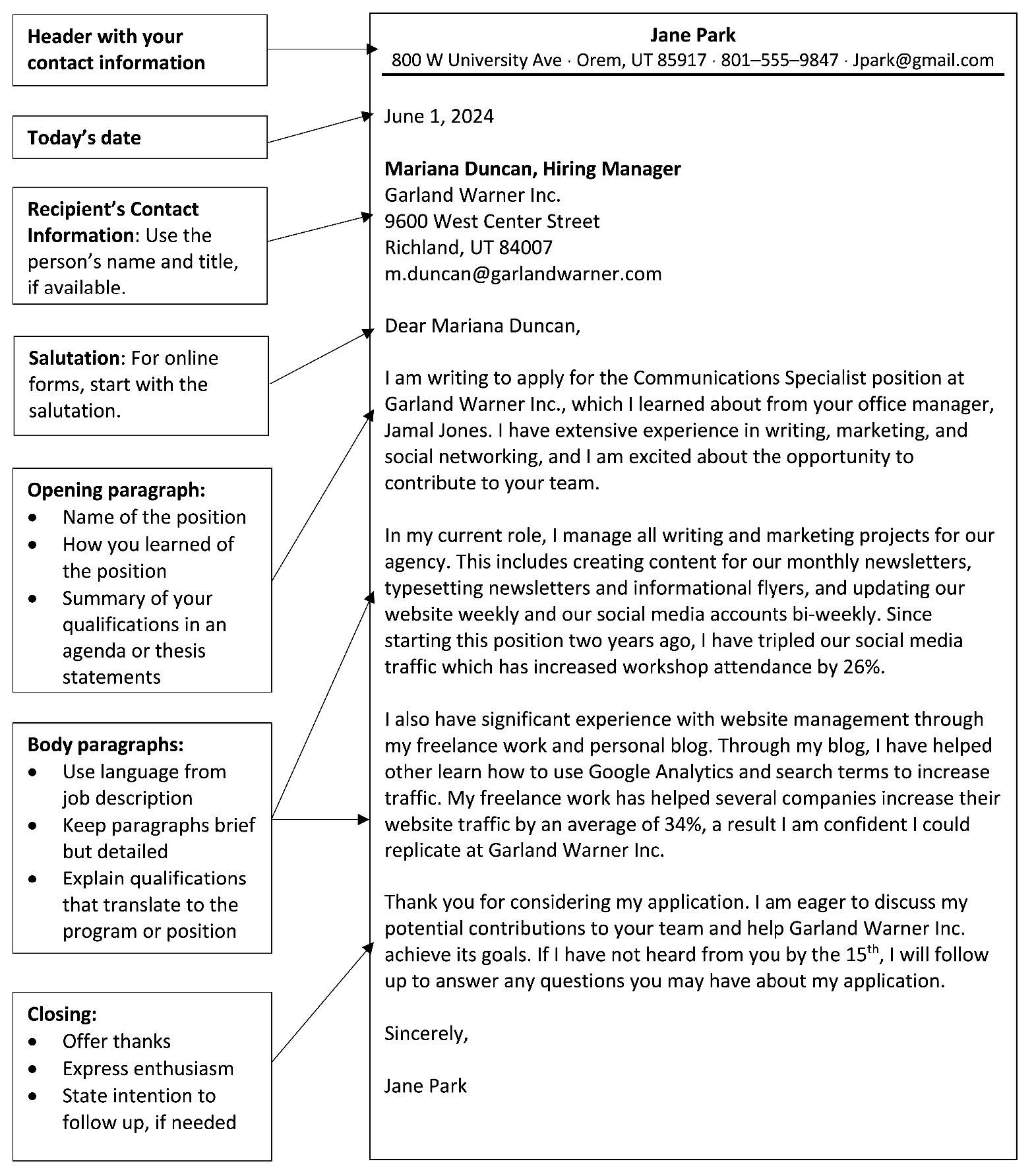Cover letters are typically part of an application. They are formal documents you use to introduce yourself and discuss your knowledge, skills, and experience. Cover letters function alongside your resume and can be submitted physically, attached as documents, or typed into an online form. This resource provides basic information about cover letters, but you should always tailor your work to your audience and prompt
A cover letter includes introductory information followed by the body of the letter. Cover letters are generally reviewed in 20–40 seconds, so your letter should be concise, persuasive, and mirror the language used in the application prompt or guidelines.
For physical or attached documents, include your contact information, the recipient’s contact information, and the date. Include the introductory information at the top of the page, left-aligned. If you are including a header, the heading format should match your resume. Include a salutation. Address the person in charge of filling the position by name. If unknown, use a generic greeting like “Dear Hiring Manager” or “Dear Selection Committee.” For online forms, skip the introductory information, and start with the salutation.
In the opening paragraph, name the position you are applying for and how you learned about it. For example, if you learned about the position from a current employee, mention the person by name. Identify keywords from the job description and use that same language to discuss your qualifications. Summarize the qualifications you will highlight in your letter in an agenda or thesis statement.
Write two or three concise body paragraphs detailing your relevant knowledge, skills, experience. Describe specific accomplishments and explain how these accomplishments qualify you for the position or program. Do not simply repeat information from your resume. Remember, your cover letter and your resume work in conjunction with each other.
In your closing paragraph, thank the reader for reviewing your application and express your enthusiasm for the position. If needed, restate your contact information, list times you are available for an interview, and, if the job description does not specify when you will hear back, consider stating your intention to follow up on a certain date. Note that date in your own records, so you can contact the person again by email or phone.
